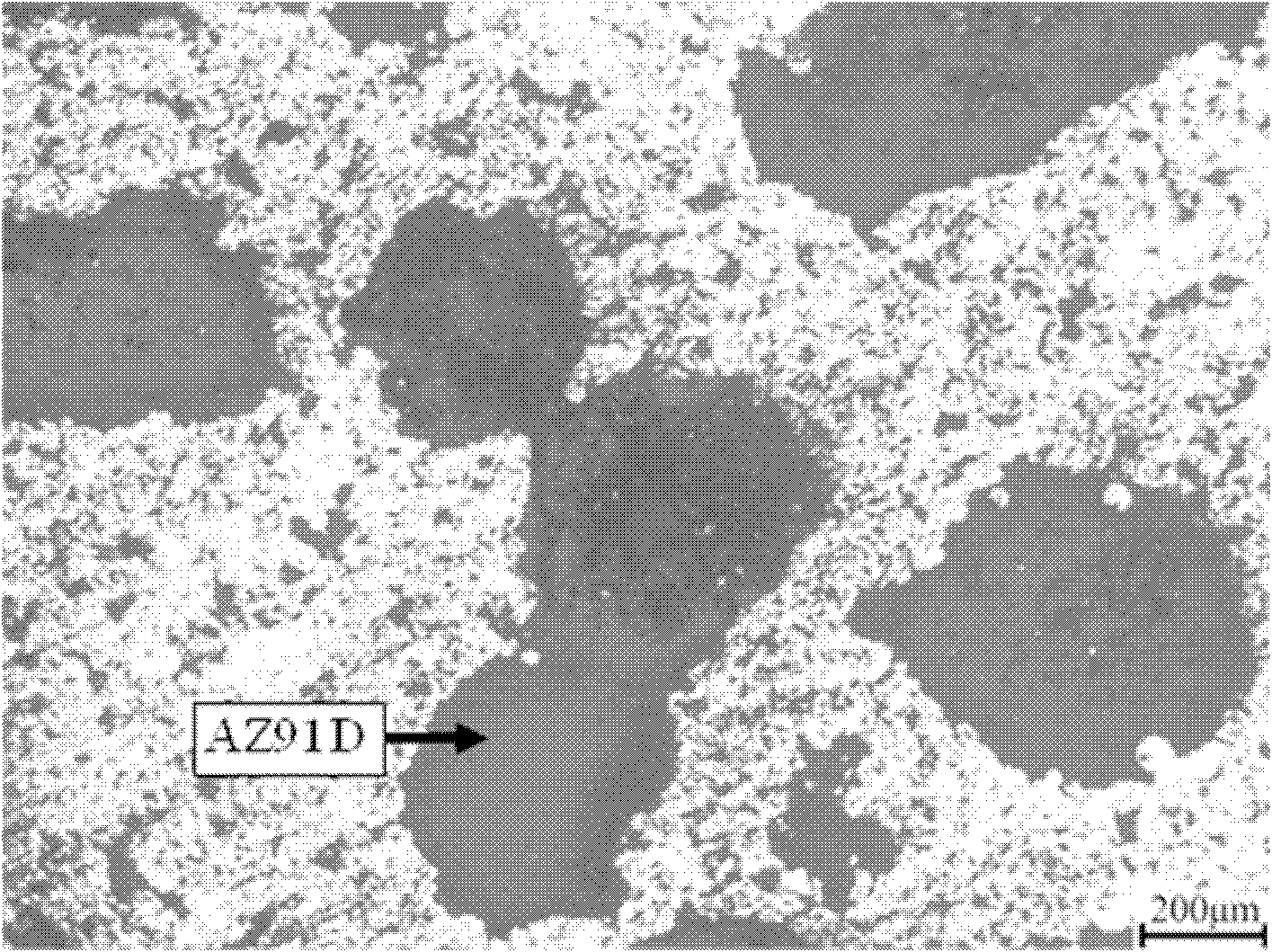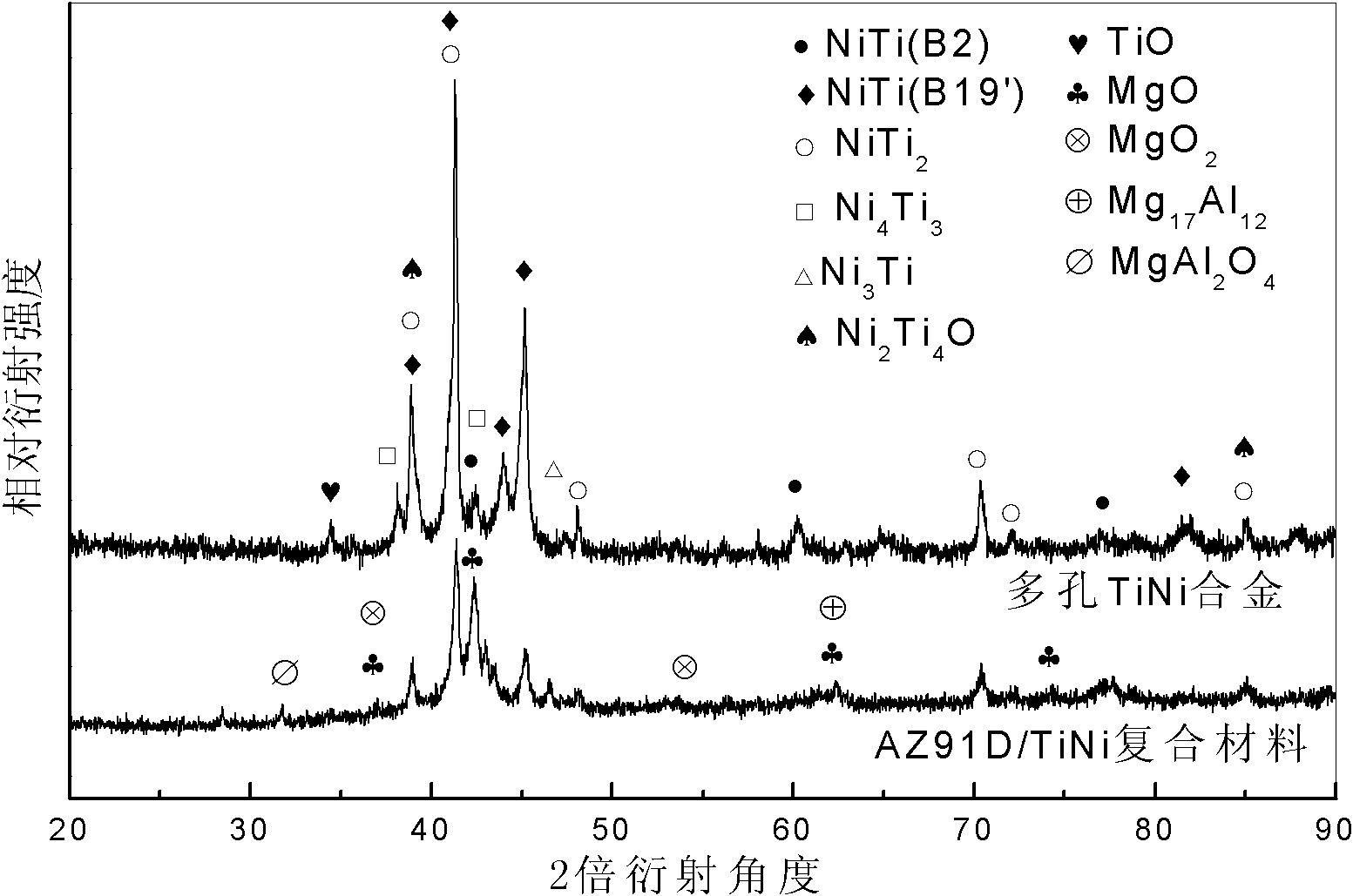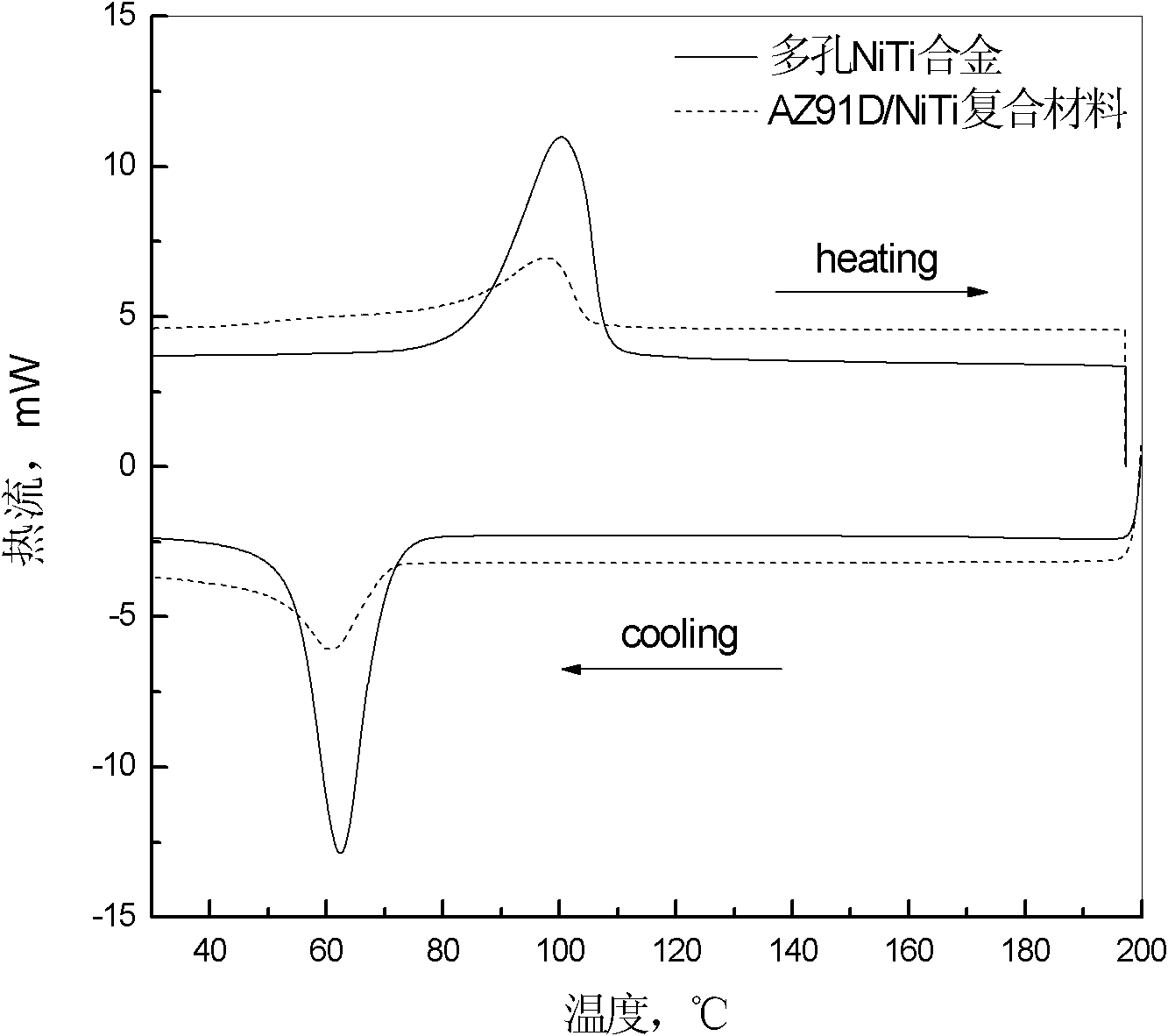TiNi alloy-based composite material with near-zero thermal expansion characteristic and preparation method thereof
A near-zero expansion and composite material technology, which is applied in the field of preparation of new materials, can solve the problems of low strength of memory alloy and high density of dense titanium-nickel shape memory alloy, etc., and achieve good comprehensive mechanical properties, stable strength and superelasticity, The effect of low density
- Summary
- Abstract
- Description
- Claims
- Application Information
AI Technical Summary
Problems solved by technology
Method used
Image
Examples
Embodiment 1
[0044] Pure Ti powder (average particle size is 50 μm) and pure Ni powder (average particle size is 50 μm), according to the Ti, Ni atomic ratio 56.2:43.8 ingredients mixed thoroughly for 24 hours to obtain the raw material powder A. Add 5wt.% urea (with a particle size of 600-900 μm) to powder A and mix thoroughly for 8 hours to make powder B. The powder B was pressed into a cylindrical green body with a diameter of 16 mm and a height of 26 mm at room temperature with a cold pressing pressure of 200 MPa. Put the billet into a tube-type sintering furnace, raise the temperature to 200°C under the protection of argon with a purity higher than 99.99%, and hold it for 40 minutes to remove the pore-forming agent, then raise the temperature to 680°C at a rate of 15°C / min, and hold it for 15 minutes. Minutes to activate the Ti and Ni atoms in the green body, then raise the temperature to 800°C at a rate of 6°C / min, keep it for 15 minutes, and finally raise the temperature to 1000°C a...
Embodiment 2
[0052] Pure Ti powder (average particle size is 50 μm) and pure Ni powder (average particle size is 50 μm), according to the Ti, Ni atomic ratio 55.8:44.2 ingredients mixed thoroughly for 24 hours to obtain raw material powder C. Add 10wt.% urea (with a particle size of 600-900 μm) to powder C and mix thoroughly for 8 hours to make powder D. The powder D was pressed into a cylindrical green body with a diameter of 16 mm and a height of 26 mm at room temperature with a cold pressing pressure of 100 MPa. Put the billet into a tube-type sintering furnace, raise the temperature to 200°C under the protection of argon with a purity higher than 99.99%, and hold it for 40 minutes to remove the pore-forming agent, then raise the temperature to 680°C at a rate of 15°C / min, and hold it for 15 minutes. Minutes to activate the Ti and Ni atoms in the green body, then raise the temperature to 800°C at a rate of 6°C / min, keep it for 15 minutes, and finally raise the temperature to 1000°C at a...
Embodiment 3
[0056] Raw material powder E was obtained by mixing pure Ti powder (average particle size 50 μm) and pure Ni powder (average particle size 50 μm) according to Ti:Ni atomic ratio 57.1:42.9 for 24 hours. Add 8wt.% urea (particle size: 300-450 μm) to powder E, and mix thoroughly for 8 hours to make powder F. The powder F was pressed into a cylindrical green body with a diameter of 16 mm and a height of 26 mm at room temperature with a cold pressing pressure of 200 MPa. Put the billet into a tube-type sintering furnace, raise the temperature to 200°C under the protection of argon with a purity higher than 99.99%, and hold it for 40 minutes to remove the pore-forming agent, then raise the temperature to 680°C at a rate of 15°C / min, and hold it for 15 minutes. Minutes to activate the Ti and Ni atoms in the green body, then raise the temperature to 800°C at a rate of 6°C / min, keep it for 15 minutes, and finally raise the temperature to 1000°C at a rate of 5°C / min, keep it for 3 hours...
PUM
| Property | Measurement | Unit |
|---|---|---|
| Diameter | aaaaa | aaaaa |
| Height | aaaaa | aaaaa |
| Height | aaaaa | aaaaa |
Abstract
Description
Claims
Application Information
 Login to View More
Login to View More - R&D
- Intellectual Property
- Life Sciences
- Materials
- Tech Scout
- Unparalleled Data Quality
- Higher Quality Content
- 60% Fewer Hallucinations
Browse by: Latest US Patents, China's latest patents, Technical Efficacy Thesaurus, Application Domain, Technology Topic, Popular Technical Reports.
© 2025 PatSnap. All rights reserved.Legal|Privacy policy|Modern Slavery Act Transparency Statement|Sitemap|About US| Contact US: help@patsnap.com



